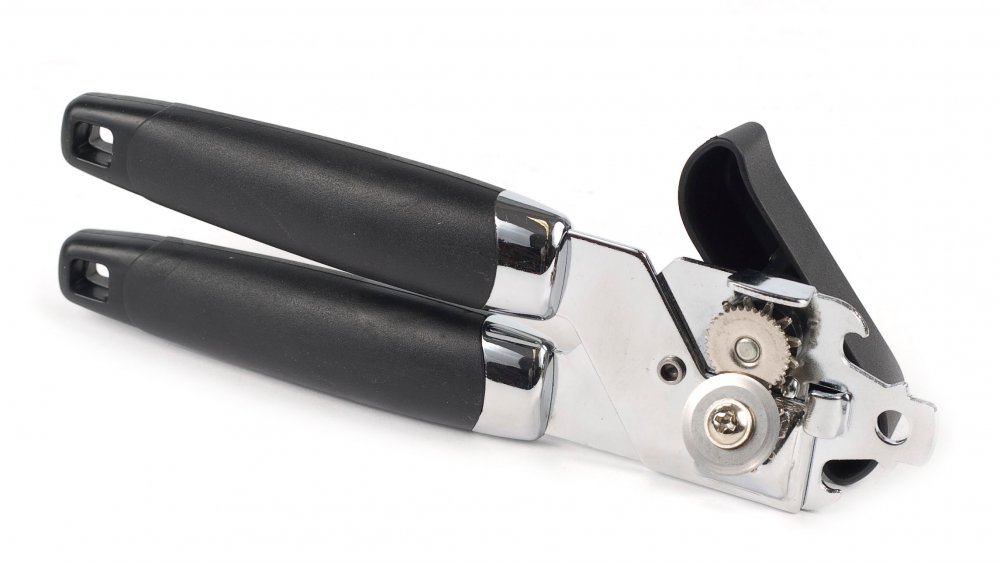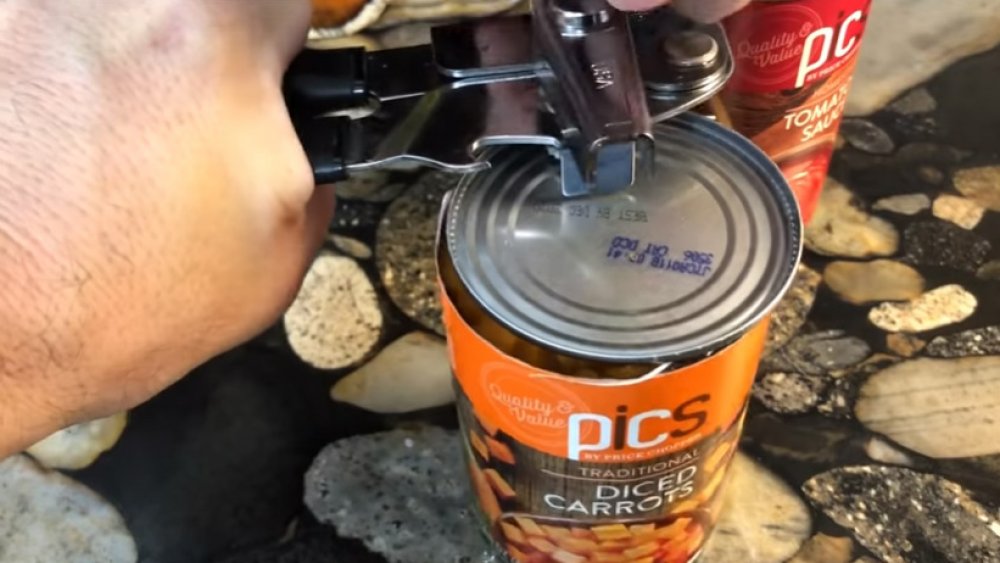The Correct Way To Use A Can Opener
The can opener is by no means a new kitchen tool. In fact, the modern version of it was first developed way back in 1870 (via Smithsonian Magazine). But even with over 100 years of practice, it turns out people still might not be using can openers correctly. Is there a better, life-changing way out there? Well, that really depends on what your can opening woes are.
Opening a can with a manual can opener should be a relatively simple task, but like so many other things, the Internet is skeptical of how it's truly done correctly. Grab yourself a can and a can opener, because it's time to find out the right way to use this essential kitchen tool.
The horizontal vs. vertical can opening method
When it comes to using a can opener, there are the folks who opt for holding it horizontal to the can, and there are those who hold it vertically. By holding it horizontally, though, you eliminate some mess.
"The traditional (vertical) way is fine; you'll just have sharper edges on the lid, and the lid may sink into the can a bit," Lisa McManus, executive tasting and testing editor for America's Test Kitchen told Today. The horizontal method means no sunken lid.
Still, some on the web aren't convinced that the "right way" is all that superior. "The way purported as 'right' in this video leaves the entire cut top edge exposed and 'sharp' meaning easier to cut your hand on," one person complained on Reddit. A user who tested the method on YouTube noted that the horizontal method worked well, but did indeed leave a "very sharp" edge on the can.
Truth be told, a traditional can opener is always going to leave a sharp or jagged edge either on the lid or the can itself, no matter what method you use. That's the downfall of the modern can opener. However, if you despise digging around in your tomato sauce for the lid, the horizontal opening method may be for you.
If you're really worried about sharp edges when opening your canned goods, you may want to opt for a safety style can opener... or just live dangerously.

